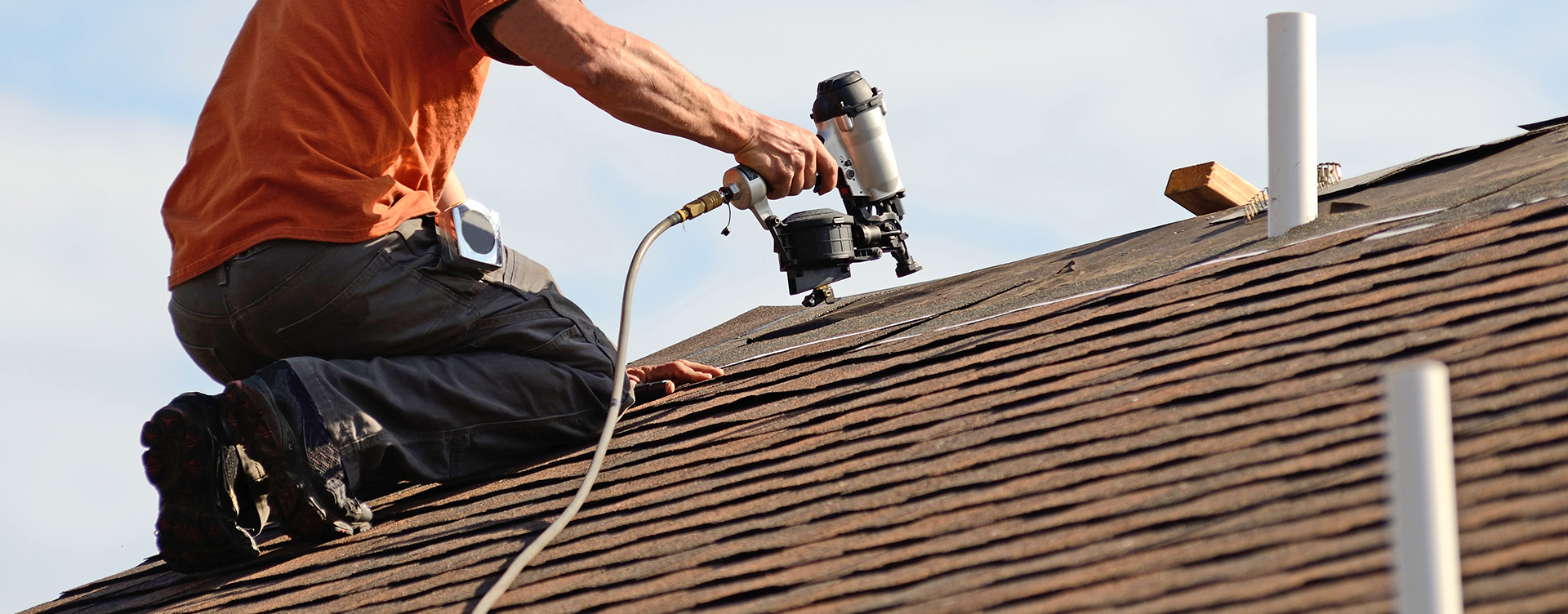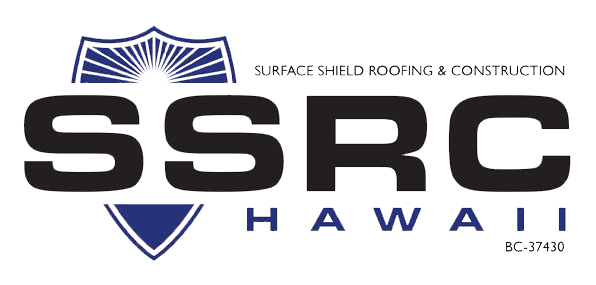The Role of commercial roofing honolulu in Protecting Your Business Property
The Ultimate List for Roofing System Install: Ensuring Top Quality and Resilience
The process of mounting a roofing system requires careful focus to information. A complete checklist can aid guarantee high quality and durability throughout the project. From assessing the existing roofing system problem to selecting the best products, each step is necessary. Correct preparation and tools play a vital function in accomplishing an effective installation. Lots of ignore the relevance of final examinations and ongoing upkeep. Recognizing these elements can significantly impact the longevity of a new roof.
Examining Your Existing Roofing Problem
How can one efficiently establish the problem of their current roof? An extensive assessment is vital for examining a roofing system's stability. House owners ought to begin by analyzing the roof from the ground, looking for visible indications of wear such as missing shingles, drooping locations, or staining. Closer assessment can be done by accessing the roof itself, where one ought to inspect for broken or curled shingles and inspect blinking around vents and chimneys.Additionally, the inside of the home warrants interest; water discolorations or mold and mildew growth on ceilings and wall surfaces may indicate leakages. Attic examinations can expose prospective problems, such as inadequate air flow or signs of moisture.Regular evaluations, ideally twice a year, can aid identify issues early and prevent costly repair work. By understanding the roofing system's existing state, homeowners can make enlightened decisions around required maintenance or replacements.
Picking the Right Roofing Products
When selecting roof covering materials, what factors should homeowners take into consideration to assure a durable and reliable selection? The climate plays a substantial duty; materials ought to stand up to regional climate conditions, whether it's heavy rain, snow, or extreme sunlight. Next off, the long life of the material is important; options like metal or slate deal extended life expectancies contrasted to asphalt shingles. House owners should likewise examine the material's weight, as this can affect the architectural stability of the home. Furthermore, appearances matter; the selected material must enhance the overall building design. Energy performance is one more consideration; some materials reflect warm, minimizing cooling costs. Finally, budget plan restraints will determine options; while some materials may have a lower ahead of time expense, lasting toughness can bring about greater financial savings. By considering these factors, homeowners can make educated decisions that improve their roofing system's high quality and long life.
Planning for Installation
Prior to the installment process starts, homeowners need to ensure that their building is effectively prepared to suit the new roofing. This preparation includes numerous essential steps to ensure a smooth and effective setup. First, homeowners should remove the location around your house of any particles, devices, or furnishings that can hinder access for professionals. Furthermore, it is essential to inform next-door neighbors concerning the future job to reduce disruption and safe cooperation.Next, property owners should evaluate their existing roof covering and architectural components, attending to any type of possible issues such as decaying wood or leakages that might impact the setup. Furthermore, securing essential permits and sticking to local building regulations is crucial for compliance and safety. Setting up the installment during desirable climate problems assists prevent hold-ups and guarantees that the job earnings without issues. Appropriate preparation establishes the foundation for a successful roof covering job, eventually improving the durability and performance of the brand-new roof.

Essential Tools and Devices
In roofing installment, having the right devices and tools is vital for an effective task. This consists of crucial safety and security gear, different roof setup tools, and effective material handling devices. Appropriate prep work and choice of these products can considerably boost performance and security at work site.
Safety Equipment Necessities
Safety and security equipment is a necessary component of any kind of roofing system installation task, making certain the wellness of employees at raised elevations. Essential safety devices includes construction hats, which shield versus falling debris, and safety and security goggles to shield the eyes from dust and particles. Non-slip footwear is significant for keeping grip on steep surface areas, while harnesses and lanyards provide autumn defense, stopping severe injuries. Handwear covers assist shield hands from sharp products and lower tiredness throughout extended periods of work. Additionally, high-visibility vests improve exposure, advertising understanding among team members and close-by workers. The use of ear defense might additionally be recommended in loud atmospheres. Generally, adhering to safety and security equipment requirements is essential for a secure and effective roofing setup process.

Roofing Installation Tools
Proper precaution prepared for a successful roofing project, yet having the right tools and equipment is equally important. Important tools for roofing installation include a ladder, permitting safe access to the roof, and a roofing nail weapon to assure reliable and secure attachment of materials. A chalk line is crucial for noting straight lines, while an energy blade is necessary for reducing roofing products precisely. Additionally, a pry bar help in getting rid of old roof shingles. Workers should additionally have a degree to validate correct alignment and drainage. Finally, an excellent pair of job handwear covers secures hands while providing grip. With each other, these tools promote a smooth roofing process, improving both high quality and sturdiness.
Material Handling Tools

A selection of material handling equipment is essential for an effective roof covering setup procedure. Equipment such as forklifts, raises, and dollies facilitate the motion of heavy materials like tiles and underlayment to the task website and onto the roof. Using scaffolding and ladders warranties safe accessibility to raised locations while minimizing the danger of injury. Tarpaulins and bins are required for correct storage space and company of products, stopping damages and guaranteeing very easy retrieval. Additionally, a crane might be required for bigger roof projects to raise significant materials directly onto the roof covering. Appropriate training in utilizing this equipment is crucial; it improves process performance and adds to overall project safety, ensuring a successful roof installation.
Step-by-Step Installment Process
The step-by-step setup process is essential for a successful roofing installment. It starts with preparing the roof surface, followed by the proper installation of underlayment, and concludes with the effective securing of roofing materials. Each of these steps plays an essential role in guaranteeing the toughness and capability of the roof covering.
Prepare the Roof Covering Surface Area
Preparing the roof surface area is crucial for making certain an effective setup of roof materials. This procedure starts with a complete inspection to identify any kind of existing damages or debris. Any loosened roof shingles, extending nails, or old roof materials should be removed to develop a clean, smooth foundation. Next off, the roofing system deck should be checked for rot or architectural problems, as these can compromise the integrity of the new roofing. After repairs, an extensive cleaning is necessary; this includes sweeping away dust, leaves, and any kind of other contaminants that can hinder attachment. Making certain correct drainage and air flow is important, as these factors affect the longevity of the roofing. A well-prepared surface sets the phase for optimal installment and resilience.
Install Underlayment Effectively
Installing underlayment appropriately is fundamental for improving the total performance of the roof. The procedure starts with picking the suitable underlayment product, which can consist of felt, synthetic, or rubberized alternatives. Next, validate the roof surface area is clean and dry before laying the underlayment - honolulu roofing contractor. Begin at the most affordable factor of the roof covering, rolling out the underlayment horizontally and overlapping each row by a minimum of 6 inches. It is very important to safeguard the underlayment in position with staples or roofing nails, avoiding spaces or creases that can endanger water resistance. Trim excess material at the edges, ensuring a neat surface. This thorough installation action is important for offering an included layer of defense versus moisture and improving sturdiness
Secure Roof Materials Efficiently
After validating the underlayment is appropriately set up, the following action entails securing the roof materials efficiently. The roof professional ought to gather all essential products, including tiles, nails, and blinking. Starting at the most affordable factor of the roofing, roof shingles need to be laid in a staggered pattern, confirming correct overlap to stop leakages. Each tile should be attached with nails, utilizing the producer's advised spacing and quantity. It is necessary to drive nails straight, avoiding over-penetration, which can endanger the product. Blinking need to be set up around chimneys and vents to improve waterproofing. The specialist needs to conduct a detailed assessment to verify all materials are safely fastened, as this will considerably affect the roof's overall toughness and long life.
Conducting Last Examinations
Detailed last assessments are important to guarantee that a freshly installed roofing meets all security and top quality requirements. This important action involves evaluating the whole roof for any kind of possible issues that might emerge post-installation. Inspectors should analyze the positioning of shingles, making sure they are properly secured and devoid of problems. Blinking and air flow systems need to likewise be assessed for right setup and functionality.Additionally, the examiner should inspect rain gutters and downspouts to validate they are properly positioned to help with water drain. Any signs of leaks, misaligned materials, or inadequate sealing around infiltrations should be addressed immediately. Contractors need to additionally see to it that all debris from the installation procedure is eliminated, leaving the website clean and risk-free. Carrying out these comprehensive inspections helps prevent future problems, inevitably extending the life expectancy of the roofing and offering homeowners with assurance regarding their financial investment.
Preserving Your New Roof Covering
Proper upkeep is crucial for assuring the longevity and performance of a new roof covering. Homeowners need to perform regular evaluations at the very least twice a year, ideally in spring and autumn, to determine prospective concerns early. During these examinations, they ought to look for indications of damages, such as missing roof shingles, leakages, or particles buildup, which can restrain water drainage and promote mold growth.Cleaning gutters and downspouts is necessary, as stopped up systems can lead to water damage and architectural concerns. Additionally, cutting looming branches can prevent abrasion and debris accumulation on the roof surface.It's likewise a good idea to arrange expert inspections every couple of years to evaluate the roof's condition thoroughly. Maintaining documents of maintenance tasks and repair work can help track the roof more info covering's performance in time (commercial roofing honolulu). By sticking to a consistent upkeep routine, home owners can protect their investment and ensure their new roof covering continues to be effective for years ahead
Often Asked Questions
The length of time Does a Regular Roof Installation Take?
The period of a common roofing installation varies based on elements such as roofing dimension, materials, and climate conditions. Typically, it can take anywhere from one day to several weeks to complete the installment.
Can I Install a New Roof Covering Over an Existing One?
The question of setting up a new roof over an existing one typically emerges. Many homeowners consider this choice for cost-effectiveness, however it is important to examine neighborhood building ordinance and the architectural honesty of the existing roof.
What Allows Are Needed for Roofing Installation?
Prior to mounting a roofing system, one have to check regional regulations. Normally, structure licenses are required, along with assessments to guarantee conformity with safety and security criteria and zoning laws. Consulting with neighborhood authorities is important for appropriate advice.
What Warranties Are Offered for Roof Products?
Different service warranties exist for roof materials, normally consisting of supplier service warranties covering problems and performance. In addition, some service providers use workmanship guarantees, making certain installation quality. Customers should meticulously evaluate terms to comprehend coverage duration and limitations.
Exactly How Can Climate Affect the Setup Process?
Weather considerably affects the installation procedure, as rain, snow, or extreme temperatures can delay work, impact product adhesion, and compromise security. Proper planning and scheduling around weather prediction are necessary for successful roofing system installation.